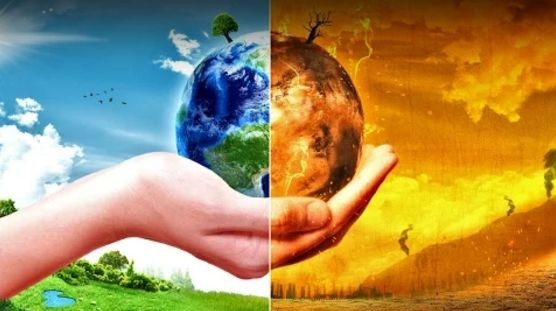By Krisana Estaura, | March 16, 2017

The study published on Wednesday, March 15, in the journal Science Advances showed that Arenahippus pernix, an early horse, got shorter by 14 percent during an ancient warming. (YouTube)
A new study has revealed that some mammals are shrinking as global temperature spikes.
The study published on Wednesday, March 15, in the journal Science Advances showed that Arenahippus pernix, an early horse, got shorter by 14 percent during an ancient warming.
Like Us on Facebook
Abigail D'Ambrosia, a graduate student at the University of New Hampshire, based her findings on a new analysis of fossilized teeth and jaw fragments gathered from Wyoming's Big Horn Basin. It is located around 130 kilometers east of the Yellow Stone National Park.
Aside from the early horse, the study also highlighted the effect of warming on mammals that lived before and after a warming event which took place roughly 54 years ago. They are a primate Cantius abditus, weasel-sized herbivore Hyopsodus simplex, and a rabbit-sized Diacodexis metsiacus, which is said to be a predecessor of pigs and deer.
Only the Cantius grew by a little 2 percent while the rest shrank - Diacodexis by 15 percent and Hyopsodus by four percent.
The Associated Press also reported on earlier research which documented a similar shrinking of mammals, including another early horse ancestor during a larger warming event about 56 million years ago.
With dwarfing of mammals occurring twice in Earth's history, Ambrosia has warned that it could happen again in the future due to man-made warming.
"These results are very significant because they provide another independent test of whether climate drives changes in body size in mammals," said Jonathan Bloch, curator of vertebrate paleontology at the Florida Museum of Natural History, said. "If we start to see patterns repeat themselves, we can learn from that. And what we learn from these lessons will certainly be important as we think about the possible response of plants and animals to future climate change."
-
Use of Coronavirus Pandemic Drones Raises Privacy Concerns: Drones Spread Fear, Local Officials Say

-
Coronavirus Hampers The Delivery Of Lockheed Martin F-35 Stealth Fighters For 2020

-
Instagram Speeds Up Plans to Add Account Memorialization Feature Due to COVID-19 Deaths

-
NASA: Perseverance Plans to Bring 'Mars Rock' to Earth in 2031

-
600 Dead And 3,000 In The Hospital as Iranians Believed Drinking High-Concentrations of Alcohol Can Cure The Coronavirus

-
600 Dead And 3,000 In The Hospital as Iranians Believed Drinking High-Concentrations of Alcohol Can Cure The Coronavirus

-
COVID-19: Doctors, Nurses Use Virtual Reality to Learn New Skills in Treating Coronavirus Patients







